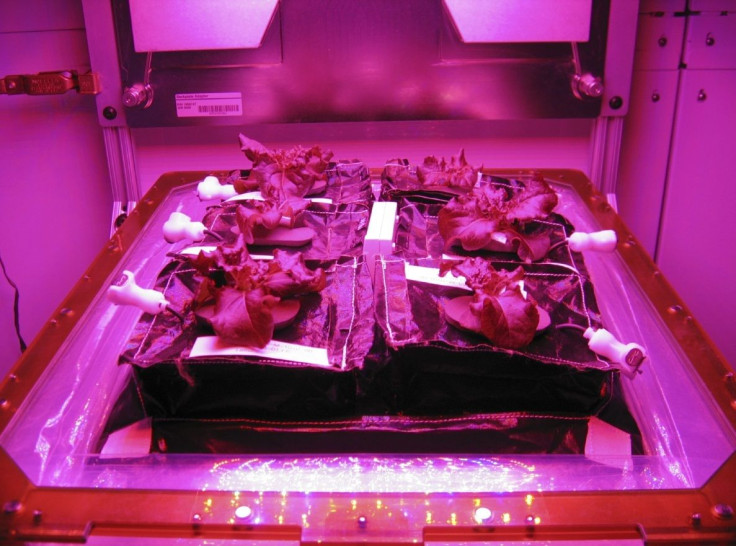Space Station Astronauts Prepare To Feast On Space-Grown Vegetables

In case it was the pre-packaged meals that turned you off from fulfilling your childhood dream of becoming an astronaut, NASA seems to have developed a solution. Space-grown vegetables will be on the menu for the first time Monday, and astronauts aboard the International Space Station are preparing for the feast.
U.S. astronaut Scott Kelly tweeted a selfie that shows him with a batch of vegetables in the background. "Tomorrow we'll eat the anticipated veggie harvest," he tweeted. "But first, lettuce take a #selfie. #YearInSpace"
Astronauts will first have to clean the vegetables with citric acid-based, food-safe sanitizing wipes. They will eat just half the vegetables and freeze the other half to be sent to Earth for additional experiments.
Tomorrow we'll eat the anticipated veggie harvest on @space_station! But first, lettuce take a #selfie. #YearInSpace pic.twitter.com/fUKQMhEDjK
— Scott Kelly (@StationCDRKelly) August 9, 2015The Vegetable Production System (Veggie) technology serves a number of purposes aside from simply allowing astronauts to eat nutritious food. The program is meant to explore the prospect of growing vegetables in space as NASA plans the exploration of other planets, like Mars. Sending food from Earth to the space station is extremely costly -- about $10,000 per pound, according to Mashable -- while growing produce on board is believed to be considerably more cost-effective.
"The farther and longer humans go away from Earth, the greater the need to be able to grow plants for food, atmosphere recycling and psychological benefits. I think that plant systems will become important components of any long-duration exploration scenario," Gioia Massa, a scientist for NASA, said in a news release from the space organization.
NASA scientists also believe that tending to a garden in space might provide a therapeutic experience for astronauts during expeditions that are often isolating and mentally grueling.
Massa said the program also could generate new insights into improving agricultural production on Earth. Many of the lessons the space program has learned about growing produce in space could be applied in urban plant factories and other agricultural settings, where electrical light and water conservation are necessary, she said.
"We hope to increase the amount and type of crop in the future, and this will allow us to learn more about growing plants in microgravity. ... We have upcoming experiments that will look at the impacts of light quality on crop yield, nutrition and flavor, both on Earth and in space."
The Veggie technology was delivered to the space station in April 2014, along with romaine seeds and one set of zinnias. The astronauts grew and harvested the produce over a 33-day period. The Veggie unit features varying-color light-emitting diode (LED) lights to help plant growth and controls for humidity and temperature.
© Copyright IBTimes 2024. All rights reserved.












